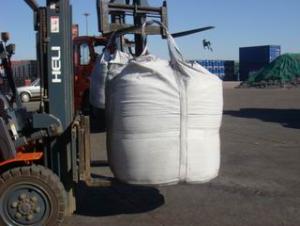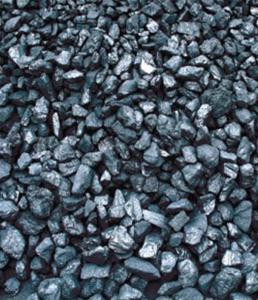Gas Calcined Anthracite FC 90 GCA For Steel Making
- Loading Port:
- China main port
- Payment Terms:
- TT OR LC
- Min Order Qty:
- 0 m.t.
- Supply Capability:
- 20000 m.t./month
OKorder Service Pledge
Quality Product, Order Online Tracking, Timely Delivery
OKorder Financial Service
Credit Rating, Credit Services, Credit Purchasing
You Might Also Like
Specifications
Calcined Anthracite Coal
Fixed carbon: 90%-95%
S: 0.5% max
Size: 0-3. 3-5.3-15 or as request
Usage
Calcined Anthracite coal is produced using the best Anthracite-Taixi Anthracite with low S and P, It is widely used in steel making and casting.
General Specifications
PARAMETER UNIT GUARANTEE VALUE | |||||
F.C.% | 95MIN | 94MIN | 93MIN | 92MIN | 90MIN |
ASH % | 4MAX | 5MAX | 6MAX | 7MAX | 8MAX |
V.M.% | 1 MAX | 1MAX | 1.5MAX | 1.5MAX | 1.5MAX |
SULFUR % | 0.5MAX | 0.5MAX | 0.5MAX | 0.5MAX | 0.5MAX |
MOISTURE % | 0.5MAX | 0.5MAX | 0.5MAX | 0.5MAX | 0.5MAX |
Size can be adjusted based on buyer's request.
Pictures

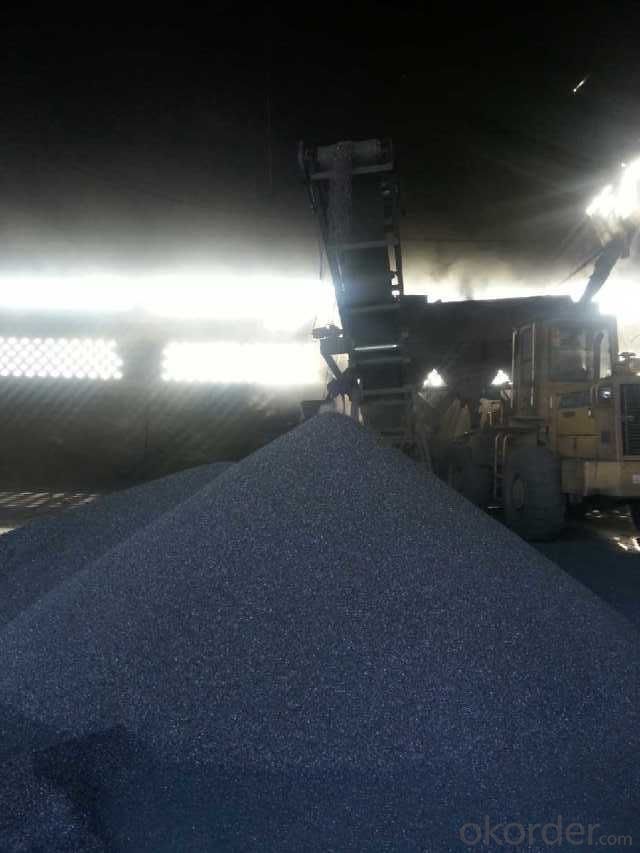
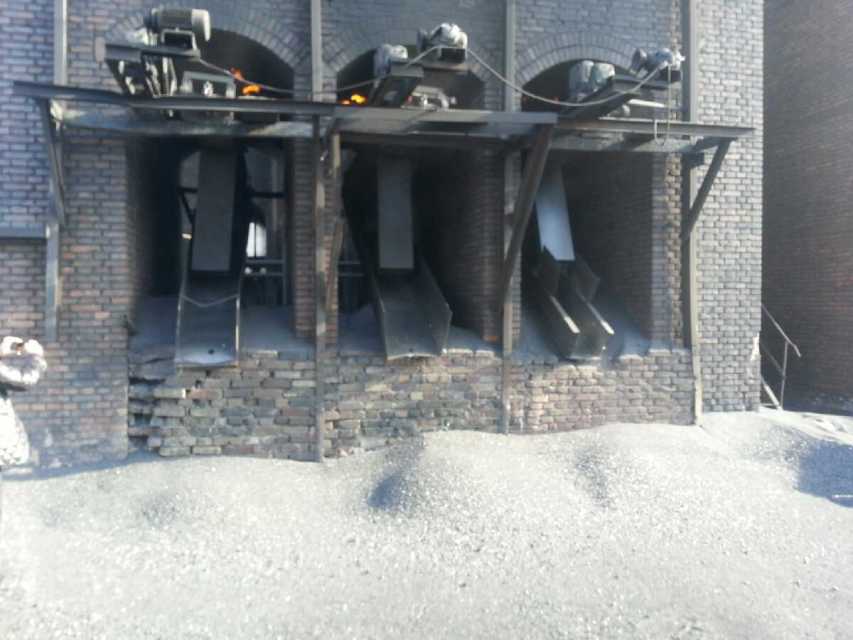
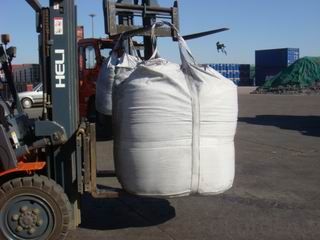
- Q:How to match?Want to breed a batch of roses seedlings, but the seedbed of mud, carbon soil do not know how to get, there is help in this regard...
- Five: sowing, that is, sowing and breeding in spring. Can also be seeding and furrow sowing, usually in mid April to germination. Spring planting and transplanting time autumn planting two, usually in late autumn or early spring before the leaves after the sap flow. Grafting grafting used multiflora rootstock, grafting and grafting of two points. Autumn budding survival rate, grafting position close to the ground as far as possible, the specific method is: in the side branch with rootstock grafting knife on the skin do "T" shaped incision, and then rose from the year growth of branches in a good selection of bud. Insert the bud into the "T" incision, then tie it with a plastic bag and shade properly so that it will heal in about two weeks. Plant ramets breeding more in late autumn or early spring, is the whole rose out of ramets soil, each plant has 1 to 2 branches and with some fibrous roots, the colonization in the basin or open, then can blossom. Cutting method in late autumn or early spring rose dormancy, their mature with 3 to 4 shoots cuttings. If the shoots are cut, shade properly and keep the seedbed moist. After cutting, the root can take root in 30 days, and the survival rate is from 70% to 80%. If the cuttings are dipped in the root, the survival rate will be higher. Layerage general in the summer, is the rose from parent branches bent down and pressed into soil, buried in the central branches, the lower half circle of the bark off, exposing branch end, the branches grow adventitious roots and grow new leaves, and then cut off the mother. As for the preparation of nutritious peat soil according to the following formula: two (1) mixture of peat mire soil and vermiculite, the proportion (by dry weight) for each 1/2 or 3/5:1/4; 2/5 or 3/4:1/4, then add the right amount of limestone (dolomite) and sandy fertilizer. (2) peat swamp soil 25-50%, vermiculite 0-25%, plus 50% of the soil. All of the above materials have been bought in the flower market.
- Q:Does alumina react with carbon?
- NotThe smelting of Al in industry can only be done by electrolysis. Even at high temperatures, the reducibility of C is not as strong as Al, and the melting point of Al2O3 is very high. At this temperature, C has been gasified
- Q:How is carbon used in the production of paints?
- Carbon is used in the production of paints in several ways. One of the main uses of carbon in paint production is as a pigment. Carbon black, which is a form of elemental carbon, is commonly used as a black pigment in various types of paints. It provides a deep and intense black color, as well as excellent light absorption properties, making it ideal for creating dark shades in paints. Carbon also plays a role in the formulation of certain types of paints, such as carbon-based coatings. These coatings are used in applications where resistance to heat, chemicals, and corrosion is required. Carbon-based coatings are often used in industries like automotive, aerospace, and marine, where durability and protection are crucial. These coatings can be applied to various surfaces, providing a high level of protection and extending the lifespan of the painted object. In addition, carbon is used as a filler material in some types of paints. Carbon fillers are added to improve the mechanical properties of the paint, such as its strength, hardness, and resistance to wear and tear. Carbon fillers also enhance the overall performance of the paint, making it more durable and long-lasting. Overall, carbon is an essential ingredient in the production of paints, serving as a pigment, a component of coatings, and a filler material. Its versatile properties make it a valuable addition to various paint formulations, enhancing the aesthetic appeal, durability, and performance of the final product.
- Q:What are the consequences of increased carbon emissions on human health?
- Increased carbon emissions have significant consequences on human health. One of the most immediate impacts is the deterioration of air quality. Carbon emissions contribute to the formation of harmful air pollutants, such as particulate matter, nitrogen oxides, and ground-level ozone. These pollutants can cause respiratory problems, such as asthma, bronchitis, and other chronic obstructive pulmonary diseases. They can also exacerbate existing respiratory conditions, leading to increased hospitalizations and premature deaths. Furthermore, carbon emissions contribute to the phenomenon of climate change, which has far-reaching effects on human health. Rising temperatures can exacerbate the occurrence and intensity of heatwaves, leading to heat-related illnesses and deaths. Heat stress also affects vulnerable populations, such as the elderly, children, and those with pre-existing health conditions. Climate change also impacts the spread of infectious diseases. Warmer temperatures and changing rainfall patterns can alter the distribution and behavior of disease-carrying vectors like mosquitoes and ticks. This can result in the increased transmission of vector-borne diseases, such as malaria, dengue fever, and Lyme disease. Additionally, climate change can disrupt food and water supplies, leading to malnutrition and an increased risk of waterborne diseases. Another consequence of carbon emissions is the increased occurrence of natural disasters, such as hurricanes, floods, and wildfires. These events can cause physical injuries, displacement, and mental health issues, such as post-traumatic stress disorder. The destruction of healthcare infrastructure during disasters also hampers access to necessary medical care, exacerbating health issues. It is important to note that the consequences of increased carbon emissions on human health disproportionately affect vulnerable populations, including low-income communities, indigenous communities, and developing countries. These groups often have limited access to healthcare, making them more susceptible to the health impacts of carbon emissions. In conclusion, increased carbon emissions have severe consequences on human health. From deteriorating air quality to the spread of infectious diseases and the occurrence of natural disasters, the impacts are wide-ranging and pose significant risks to individuals and communities. It is crucial to mitigate carbon emissions and invest in sustainable practices to safeguard human health and create a healthier and more sustainable future.
- Q:The dangers of grilled BBQ on humansWhat are the dangers of a charcoal barbecue?
- This study shows that burnt meat also has an effect on the human body, although the amount of conversion quantity and the human animal, was about 1/20000, the ratio is very low, but also can avoid the best to avoid as far as possible, especially in old age people.In fact, the biggest problem is not barbecue food, but added to food oil juice, sauce, the oil dripping on the charcoal, heating will produce carcinogenic substances, attached to the barbecue, grilled Dried tofu, grilled corn, fish and so on were eaten roasted in the human body, long-term consumption down, have a higher risk of cancer some. In addition, the flame will make protein to produce chemical changes into highly toxic carcinogenic substances called heterocyclic amines (Heterocyclic amine), often eat these substances, easily lead to the occurrence of cancer.
- Q:What is carbon sequestration?
- Carbon sequestration is the process by which carbon dioxide (CO2) is captured from the atmosphere and stored for an extended period of time, preventing it from being released and contributing to climate change. This technique aims to reduce the concentration of CO2 in the atmosphere, as this greenhouse gas is a major driver of global warming. Carbon sequestration can occur naturally through biological processes, such as photosynthesis in plants and algae, or it can be achieved through various artificial methods. Natural carbon sequestration occurs when plants, trees, and other vegetation absorb CO2 during photosynthesis and store it in their tissues. This process, known as terrestrial sequestration, plays a crucial role in reducing atmospheric CO2 levels. Additionally, oceans also act as a significant sink for CO2, absorbing and storing vast amounts of it. This is referred to as oceanic sequestration. Artificial carbon sequestration techniques involve capturing CO2 emissions from industrial processes, power plants, and other sources before they are released into the atmosphere. There are several methods for carbon capture, including pre-combustion capture, post-combustion capture, and oxy-fuel combustion. Once the CO2 is captured, it can be transported and stored underground in geological formations, such as depleted oil and gas fields or saline aquifers. This process is commonly known as carbon capture and storage (CCS) or carbon capture utilization and storage (CCUS). Carbon sequestration has gained significant attention due to its potential to mitigate climate change. By reducing the amount of CO2 in the atmosphere, it helps to slow down the pace of global warming and reduce the impacts of climate change. It is considered to be a crucial part of the broader strategy to achieve net-zero emissions, as it not only reduces future emissions but also removes CO2 that has already been emitted. However, carbon sequestration is not a silver bullet solution to climate change. It should be seen as a complementary approach to other mitigation efforts, such as transitioning to renewable energy sources and improving energy efficiency. Additionally, the long-term storage of CO2 requires careful monitoring and management to ensure its effectiveness and prevent any leakage or environmental risks. Overall, carbon sequestration is a vital tool in the fight against climate change, offering the potential to reduce greenhouse gas emissions and contribute to a more sustainable future.
- Q:How can carbon capture and storage be implemented?
- CCS technology, which captures and stores carbon dioxide emissions from industrial processes, is crucial for preventing their release into the atmosphere. The implementation of CCS involves several key steps. First and foremost, CO2 emissions are captured from power plants, factories, and other industrial sources using different methods such as pre-combustion capture, post-combustion capture, and oxy-fuel combustion. Pre-combustion capture involves converting fossil fuels into a hydrogen and CO2 mixture, with the latter being separated and stored. Post-combustion capture removes CO2 from the flue gases after combustion. Oxy-fuel combustion, on the other hand, burns fossil fuels in pure oxygen, resulting in a flue gas that is predominantly CO2. After the capture process, the second step is transportation. The captured CO2 must be transported from the capture site to a storage site. This can be accomplished through pipelines, ships, or trucks, depending on the distance and volume of CO2. Pipelines are the most commonly used method, particularly for large-scale projects, due to their cost-effectiveness and efficiency. The third step involves storage, which entails injecting the captured CO2 deep underground into geological formations for long-term storage. The most suitable storage sites include depleted oil and gas fields, saline aquifers, and deep coal seams. These sites have the capacity to securely store significant amounts of CO2 for hundreds or even thousands of years. Monitoring and verification are crucial for ensuring the safety and effectiveness of CCS. Continuous monitoring is necessary to detect any potential leaks or seismic activities that could compromise the integrity of the storage site. Verification activities involve assessing the long-term storage of CO2 and ensuring compliance with regulations and standards. The successful implementation of CCS also requires policy support and financial incentives. Governments can provide regulatory frameworks, tax incentives, and funding to encourage the adoption of CCS technologies. International cooperation and collaboration are also vital, as CCS can be a global solution to mitigate climate change. In conclusion, the implementation of carbon capture and storage involves capturing, transporting, injecting, and monitoring CO2 emissions. It necessitates various technologies, infrastructure, and policy support for widespread adoption. By effectively implementing CCS, we can make significant reductions in greenhouse gas emissions and combat climate change.
- Q:What are the impacts of carbon emissions on marine life?
- Carbon emissions, particularly in the form of carbon dioxide (CO2) released from burning fossil fuels, have significant impacts on marine life. One of the primary effects is ocean acidification, which occurs when excess CO2 is absorbed by seawater, leading to a decrease in pH levels. This acidification can have detrimental effects on marine organisms, especially those with calcium carbonate shells or skeletons, such as corals, mollusks, and some plankton. As the pH levels decrease, it becomes harder for these organisms to build and maintain their shells. This can result in reduced growth rates, weakened shells, and increased vulnerability to predation and disease. Additionally, the dissolution of calcium carbonate shells due to ocean acidification can disrupt the entire food chain, as many organisms rely on these shells for protection or as a food source. Furthermore, carbon emissions contribute to global warming, leading to rising sea temperatures. Warmer waters can cause coral bleaching, a phenomenon where corals expel the colorful algae living within their tissues, resulting in the loss of their main food source and leading to their eventual death. Coral reefs are vital ecosystems that support a diverse array of marine life, and their decline has far-reaching consequences on biodiversity and coastal communities that rely on them for tourism and fisheries. The impacts of carbon emissions on marine life extend beyond individual species and ecosystems. Climate change, driven by carbon emissions, can disrupt ocean currents, alter weather patterns, and cause changes in nutrient availability. These changes can affect the distribution and abundance of marine organisms, leading to shifts in species composition and potential loss of biodiversity. It is worth noting that the impacts of carbon emissions on marine life are interconnected with other stressors such as overfishing, pollution, and habitat destruction. These combined pressures exacerbate the vulnerability of marine ecosystems and increase the risks of irreversible damage. To mitigate the impacts of carbon emissions on marine life, reducing greenhouse gas emissions is crucial. Transitioning to cleaner and renewable energy sources, improving energy efficiency, and adopting sustainable practices can help slow down the rate of ocean acidification and global warming. Additionally, protecting and restoring marine habitats, implementing sustainable fishing practices, and reducing pollution can enhance the resilience of marine ecosystems and promote the recovery of marine life.
- Q:How does carbon affect the formation of avalanches?
- Carbon does not directly affect the formation of avalanches. Avalanches occur primarily due to factors such as snowpack stability, slope angle, and weather conditions. However, carbon emissions and climate change can indirectly impact avalanche formation by affecting snowpack stability. Rising carbon dioxide levels in the atmosphere contribute to global warming, which in turn affects the overall climate. As temperatures increase, it leads to changes in precipitation patterns, snowfall amounts, and snowpack characteristics. Warmer temperatures can cause rain instead of snow, leading to a less stable snowpack. In addition to altered precipitation patterns, climate change can also lead to the melting and refreezing of snow, creating weak layers within the snowpack. These weak layers, combined with subsequent snowfall and wind, can result in unstable snowpacks that are prone to avalanches. Furthermore, carbon emissions contribute to the overall warming of the planet, which can lead to glacier retreat. Glaciers act as natural barriers and stabilizers in mountainous regions, reducing the likelihood of avalanches. As glaciers shrink, they leave behind unstable slopes, increasing the potential for avalanches. It is important to note that while carbon emissions and climate change have an indirect influence on avalanche formation, they are not the sole or primary cause. Local weather conditions, slope angles, and snowpack stability assessments conducted by avalanche experts play a more immediate role in determining the likelihood of an avalanche occurring.
- Q:DNF new advanced furnace rock carbon reinforcement +10 50 powder weapons, the upper 11 probability of success is how much, how many advanced furnace rock carbon?
- Specifically, for a random item / skill, there is an initial probability, called C. (for each item / skills are different) for example, roaming learned a 10 crit, so he first attack crit rate is C, if not crit, then the next attack, the system will take the chance to crit increased to 2C, if not a crit, then to improve to 3C... Until a crit, and start all over. The next chance of crit returns to the very beginning of C. (obviously, if has not crit, so after a certain number of attacks on X X*C>1, then this will surely be a crit) this is our game in random, many people may have noticed that some of our props inside the game, such as Tara jewelry sets BUFF probability is 1%, but in fact the BUFF probability is much more than 1%. Many props are like this, such as the title of death, robot necklace...... The odds of a low probability are high. The reason is that everything in the game is pseudo random, and our random values are always superimposed, that is to say, definitely. Strengthening equipment is the reverse, for the first time is 100%, and then multiplied by a C, has been multiplied to the probability of infinity approaching 0...... So the cushion works in theory. Believe to see, understand the players have already understood, want to play high carbon to the biggest use, depend on mat. After understanding this point of view we can count the cost of the 20 high carbon equipment 8 yuan then taking yxb:rmb1:20 as an example, if more than 160W will use cost-effective equipment than carbon somehow expensive ~ here is to provide you a way
1. Manufacturer Overview |
|
|---|---|
| Location | |
| Year Established | |
| Annual Output Value | |
| Main Markets | |
| Company Certifications | |
2. Manufacturer Certificates |
|
|---|---|
| a) Certification Name | |
| Range | |
| Reference | |
| Validity Period | |
3. Manufacturer Capability |
|
|---|---|
| a)Trade Capacity | |
| Nearest Port | |
| Export Percentage | |
| No.of Employees in Trade Department | |
| Language Spoken: | |
| b)Factory Information | |
| Factory Size: | |
| No. of Production Lines | |
| Contract Manufacturing | |
| Product Price Range | |
Send your message to us
Gas Calcined Anthracite FC 90 GCA For Steel Making
- Loading Port:
- China main port
- Payment Terms:
- TT OR LC
- Min Order Qty:
- 0 m.t.
- Supply Capability:
- 20000 m.t./month
OKorder Service Pledge
Quality Product, Order Online Tracking, Timely Delivery
OKorder Financial Service
Credit Rating, Credit Services, Credit Purchasing
Similar products
New products
Hot products

